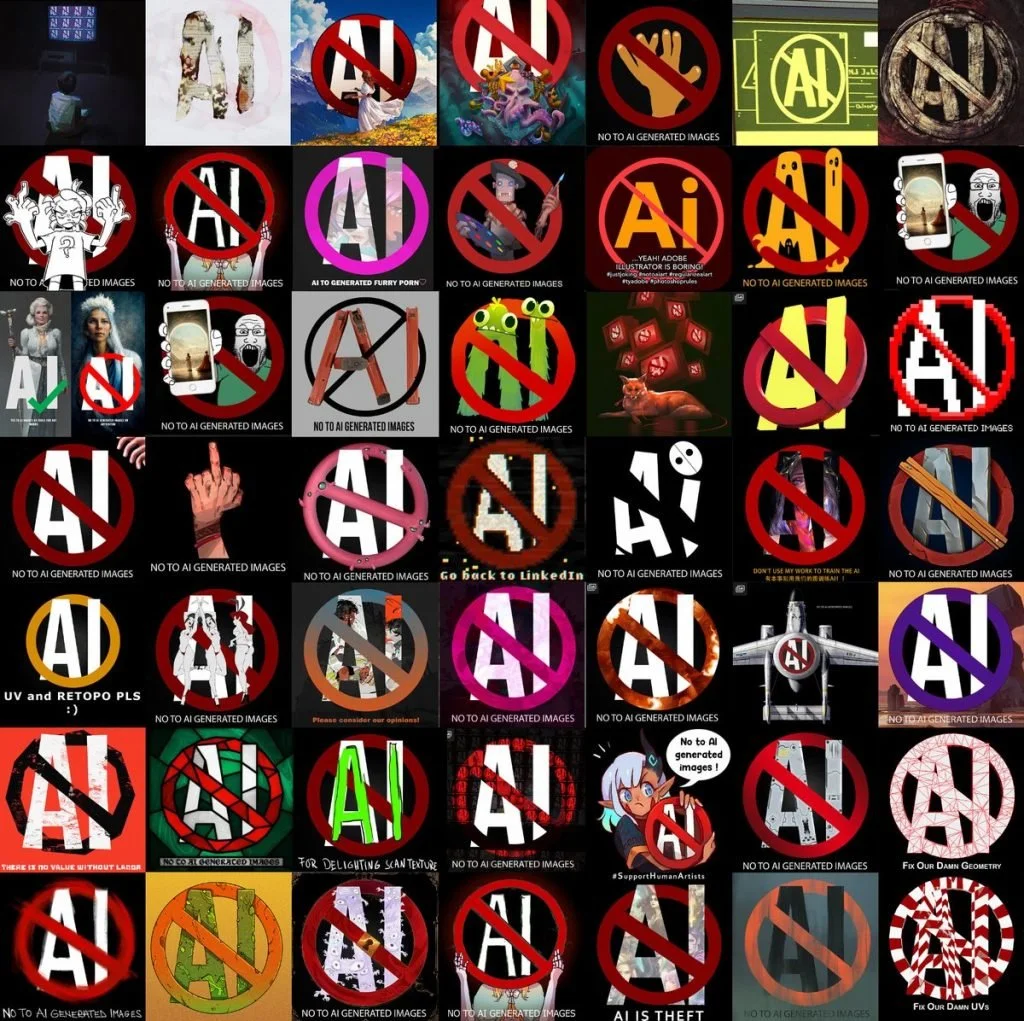Artificial Intelligence (AI) has been a buzzword in all segments of the world for years and the art world is far from immune. “AI art” refers to artworks that have been generated with the use of machine learning algorithms. These algorithms are trained on large datasets of images to create new artworks based on specific prompts. As an artist, it's natural to have concerns about the use of copyrighted material by AI programs to generate new art. Although AI-generated music is protected by copyright laws, there are currently no such laws in place for AI art. Its important to understand this concern and see where the roots of the “No AI art” fears come from.
I think however, it's important to look at the topic objectively and push past impulsive fear that may arise. In the end, I feel, that AI art is a new medium, much like photography and digital art. 20 years ago, with the rise of digital art, artists have access to "CTRL-Z" or undo, which allowed them to make mistakes without worrying about permanent consequences. They can also layer their art directly over photographs to create new pieces (Tracing! A Travesty!). Go back over 100 years with the advent of the 7.0 earthquake that was photography! Artists feared that their skills would no longer be needed when an exact photo of that elusive golden hour sunset could be captured in an instant.
Any artist understands the tool or medium is only part of the equation. In the words of the famous artist Pablo Picasso, "It took me four years to paint like Raphael, but a lifetime to paint like a child." This quote speaks to the idea that the skill and vision of an artist cannot be replaced by technology. While AI art may shake up the art industry and replace some transactional jobs for illustration (and most likely from companies or individuals who would have never considered paying and artist their fair due in the 1st place), it's ultimately a new medium that will allow artists to adapt and use it to their advantage.
There have been numerous examples of AI-generated art in recent years, including the sale of a digital artwork created by the AI program GAN for $69 million in March 2021. The artwork, called "Everydays: The First 5000 Days," was created by artist Beeple and is made up of 5,000 individual digital artworks generated by GAN.
While the rise of AI art may be perceived as a threat to traditional art forms and jobs in the industry, it is, in fact, an exciting development that opens up new possibilities for artistic expression. AI is not a replacement for traditional art forms like acrylic painting, but rather a tool that can be used to complement and enhance an artist's personal vision and open up art to users who may have found barriers with traditional mediums.
As artists embrace the medium and explore its capabilities, we can expect to see a wide range of innovative and thought-provoking works emerge. From the mind-bending digital creations of Robbie Barrat to the thought-provoking portraiture of Mario Klingemann, the potential for AI art is endless.
Remember that art, like all things, is constantly evolving. The birth of photography, for instance, was once viewed with fear and suspicion by traditional artists who worried that their skills would become obsolete. As famous painter Edgar Degas once said, "The art of painting is dead! It's been killed by photography!" Of course, history has proven him wrong, and photography has become an art form in its own right.
Similarly, AI art is not a replacement for traditional art forms, but rather a new medium that opens up exciting possibilities for artistic expression. The potential of AI art lies not in its ability to replace artists, but in its ability to empower them. With AI tools at their disposal, artists can more easily explore new ideas, push creative boundaries, and express their unique visions in ways never before possible. For example, imagine an artist who may not be able to hold a paintbrush, but can use voice-to-text technology to share their vision with the world.
Remember that Impressionism didn't kill Realism. Cubism and Abstract art did not kill what came before. Traditional art has survived photography, print making, digital art and NFT's. It will survive AI.
I am so interested to see this new frontier of AI art, and see where it takes us and most importantly how it moves the viewer. In the end it's about the artist connecting and I'm looking forward to so many of those moments for myself and new AI artists. As always I'm excited to hear what you think. Take a minute and tell me in the comments, and until next time,
Just Keep Creating,
Jim




